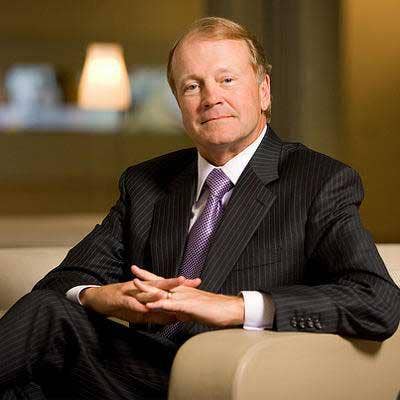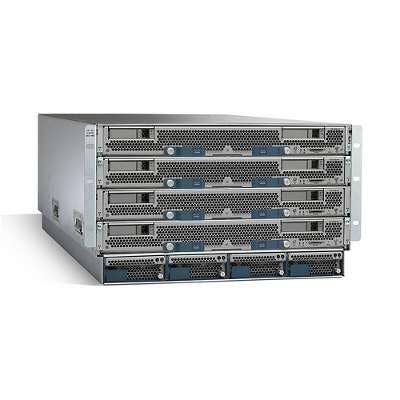10 Takeaways From Cisco's Questionable Q1

Spooked?
Cisco is considered one of the tech industry's bellwethers: those companies whose earnings, guidance and economic outlook set the tone for how well the broader industry is performing at the moment. That's probably why a company like Cisco can have a healthy quarter -- the company was up in both products and earnings -- and still throw enough of a scare into the markets to send its stock plummeting by double-digit percentages in after-hours trading. With so much to touch on in Cisco's earnings report, here's a look at 10 takeaways that might explain the subdued reaction.

A Win Is A Win
Ever hear the sports expression, "a win that felt like a loss"? That has to be how Cisco is feeling after posting not only higher revenues but also higher profits in its first fiscal quarter, but being met with disappointed analysts and a jittery market responsible for bringing its stock as low as 13.5 percent in after-hours trading Monday. But the numbers don't lie: Cisco is doing well.
For the first quarter of its fiscal 2011, ended Oct. 30, Cisco posted a profit of $1.93 billion, or 34 cents per share, up 8 percent from $1.79 billion, or 30 cents per share, in the year-ago quarter. Revenue grew 19 percent to $10.75 billion, up from $9.02 billion last year, and in line with Cisco's projection in the last quarter that revenue would grow 18 percent to 20 percent. Both earnings and revenue were slightly ahead of Wall Street expectations.

Half A Bil' Behind
Maybe those Q1 numbers aren't such cause for celebration after all. Cisco Chairman and CEO John Chambers confirmed on the call that orders came in more than $500 million behind what Cisco had initially forecast for Q1, causing it to slash its projections for next quarter.
Chambers stated it thus: "If you were to ask me what concerns me most about everything we cover today, it's we missed our sales forecast."

Outlook Not So Good
What raised eyebrows Wednesday was the stunning projection from Cisco that it will come in well below expected sales gains for Q2. According to Chambers, Cisco expects revenue to grow between 3 and 5 percent in the January quarter -- a far cry from the 13 percent many Street analysts were predicting.
"Our view on the guidance is, we're disappointed," said Chambers, who said Cisco had hit "air pockets" at the beginning of the first quarter that were causing it some pain, as customers pulled back on spending.
Cisco is also forecasting that revenue growth for its fiscal 2011 overall will be between 9 and 12 percent, also below the 13.1 percent the Street was hoping for.

HP and IBM: No Major Impact
Chambers singled out data center, collaboration and video as three of Cisco's fastest growing areas. Data center revenues grew 59 percent year over year, for example, and Chambers said that rivals HP and IBM are not having a major impact on its UCS- and Nexus switch-led data center offensive.
"I have a huge amount of respect for both HP and IBM. HP is clearly a competitor. IBM’s a partner and a competitor at times," Chambers said. "Rob [Llouyd] and I were reviewing the impact that it has had. Remembering again, we usually create the demand and fulfill it through partners. I would say our impact, Rob, when we looked at the numbers was not major at all. We’re doing extremely well."
Collaboration technologies grew 45 percent, and according to Chambers, the industry saw a "tipping point" in the last six months in which global CIOs are finally getting serious about video adoption. That'll be good news for Cisco as it continues to digest video powerhouse Tandberg.

UCS Is A Monster
To the naysayers who denied Cisco had a data center player on its hands with UCS, well, it's just about crow-eating time.
Growth of the UCS for Cisco has been splendid: sales grew 550 percent year-over-year during the first quarter, and the UCS has an annualized run rate of $500 million. It's in customer growth, however, where UCS has been particularly encouraging for Cisco: 2,800 UCS customers as of the first quarter, which was up from 1,700 in 2010 Q4 and 900 in 2010 Q3. UCS is looking like a Cisco triumph, and quacking like a Cisco triumph, so let's call it a Cisco triumph.

Public Sector Pain
Cisco's public sector accounts cover some 22 percent of its global orders, and while public sector overall grew 6 percent, orders from U.S. state governments were down, year-over-year, about 25 percent. European government business was also a sore spot, and Chambers predicted that public sector difficulty would continue in the next few quarters.
"I think everyone on this call understands what's going on in public sector," Chambers said. "So I'd be very surprised if that does not have an effect on the companies who did business in public sector on a global basis."

Service Provider And Cable Hurt, too
Two other challenged areas that Chambers pointed out were in Cisco's service provider business and also in cable. On the service provider side, Chambers said the losses were specific to a few areas, and service provider business was up 8 percent overall. Still, Cisco lost 2 percent of its service provider business in the U.S. And on the cable side of the equation, Cisco's North American traditional cable set-top box business plummeted 40 percent year-over-year.
Mark Sue, an analyst with RBC Capital Markets, asked Chambers during the Q&A session how it was that Cisco "missed" the cable MSO (multiple system operator) transition to IP in its cable business.
Chambers parried: "In terms of the MSOs, part of that also, as you know, is about how fast they are building our new houses, new operations. The MSOs are in a transition from traditional set-top box capability to IP set-top boxes where we are doing very well within that. So, we saw the transition coming. We positioned ourselves for the long run pretty well. We made a couple of changes in our Scientific Atlanta group in terms of management, but Mark it's just one of multiple areas."

Market Share Miss?
Chambers said Cisco is "taking market share in most of the areas we're moving into," but he also admitted Cisco has lost market share in several areas.
Chambers challenged an analyst suggestion that it was losing ground in switching, saying Cisco gained 2 points year-over-year. Wireless LAN has been an area of lost share for Cisco, and while Chambers admitted "we had lost share over a couple of quarters," wireless LAN was "up 3 points quarter-over-quarter." He did acknowledge Cisco's losses in security, which he described as "an area that we want to improve on," and also in application delivery networking.
Looking to downplay the share shifts, Chambers described some of the faltering market share areas as "very meaningful," but also among Cisco's "smallest markets."
"I want you to continue to challenge us that high but respectfully I think actually our execution here is pretty good," said Chambers in response to Oppenheimer analyst Ittai Kidron.

Supply Chain Nearly Normal
Is it finally time to declare the Cisco supply chain crisis of the past year over and done with? Just about, according to Chambers and Cisco CFO Frank Calderoni.
"Constraints in our supply chain have improved and our customer lead times are at normal levels on almost all products," Calderoni said.
Total inventory at the end of Q1 was $1.5 billion, and Cisco's inventory purchase commitments at the end of Q1 were $4 billion, down 6 percent quarter-over-quarter. According to Calderoni, that was driven by "continuing improvement in our component supply chain."

Tax Relief, Please
During the conference call, Chambers reiterated that much of Cisco's cash is parked overseas -- U.S. tax laws make bringing it into the country too expensive. But that's some $30 billion he'd love to see in play at home, said Chambers, who has been vocal in calling for tax repatriation breaks from Congress.
In a politically-flavored moment during the call, he urged the U.S. government to create a "favorable environment" and said changes to the laws represent "one of the few levers they could hit that doesn't cost the the taxpayer."